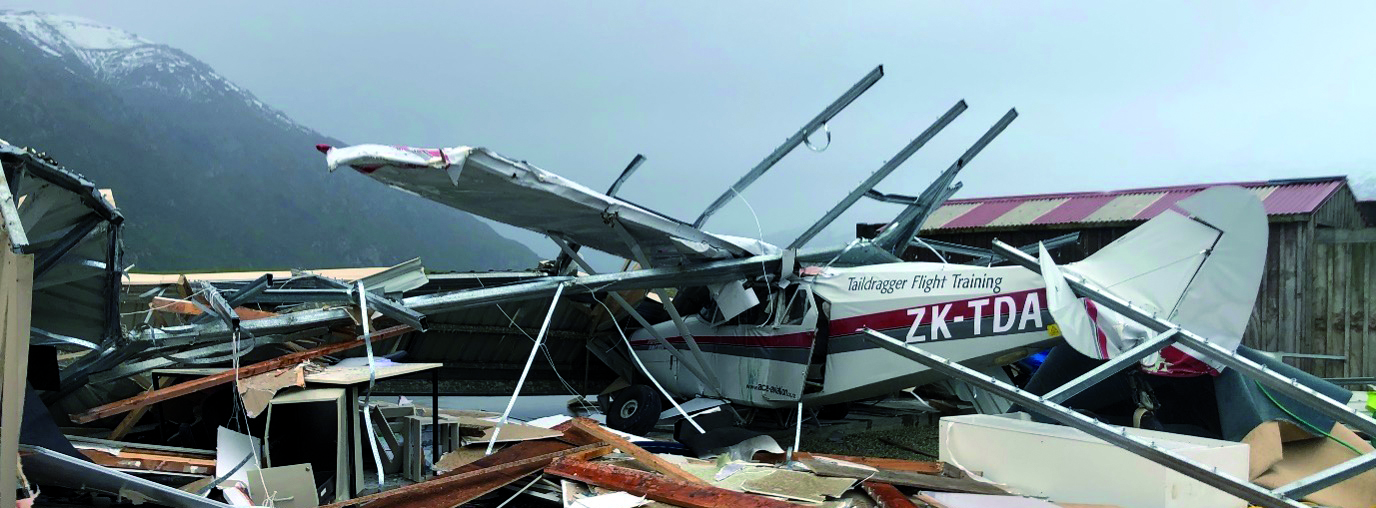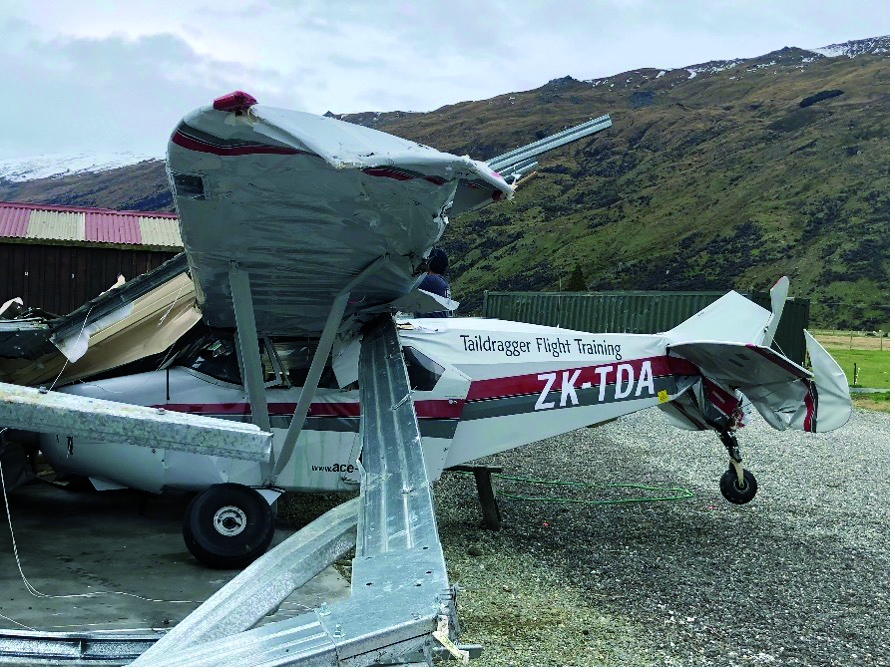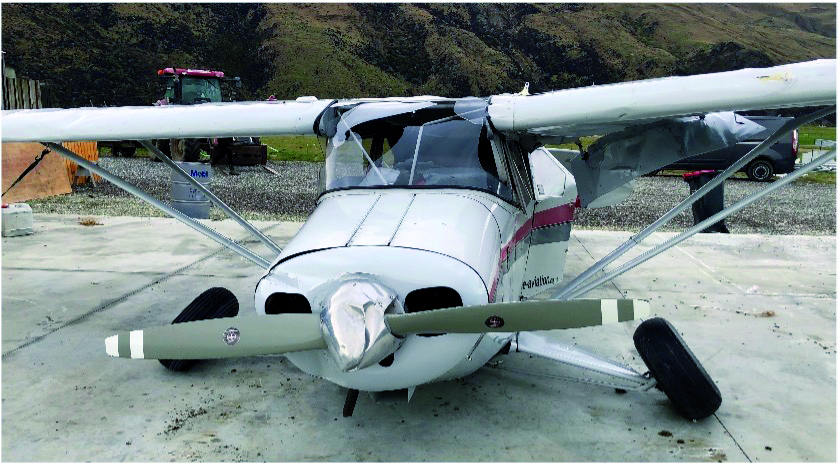By Kerry Conner
Friday August 5th 2022 is a day I would rather forget, but one that is now permanently etched in my memory, a day I wouldn’t wish upon anyone, and still find it hard to believe happened.
At precisely 1.48pm, wind gusts in excess of 86 knots per hour collapsed a steel-framed hangar on top of my Piper Pacer, destroying it instantly and writing it off.
The day started off windy, with the wind slowly increasing in strength all day, culminating in gusts over 86 knots for a half hour period (around the time of the hangar collapse) and continuing for two hours afterwards with gusts over 70 knots. Kingston township lost power supply at 12.30pm on Friday and didn’t get it back on for three days, as well as no cell phone coverage for a day.
Other damage from the storm included shelter belts blown over, pivot irrigators mangled, haybarns, farmers sheds and glass houses damaged, a complete four car garage lifted off its foundations and the roof dumped intact over the fence into the golf course.
AOPA NZ President Sue, asked if I would write an article about the process involved regarding insurance when an event like this happens – so here goes.
While waiting for the wind to calm down enough to get anywhere near the hangar to assess the damage, I called the insurance company representative (at AON). The process is that he lets the insurance assessor know of the claim, and the assessor then calls you back and asks for some info and arranges a time to come and view the aircraft.
The next call was to my aircraft engineer to let him know what had happened.
I also called the Rescue Coordination Centre and told them what had happened to the aircraft, just in case anything else happened that could set off the ELT – thus saving an inadvertent search.
If you find yourself in such a situation, don’t forget to also complete a CAA 005 form, notifying of the events that have occurred. You can do this via the online form on the CAA website.
All there was to do now was wait for the wind to stop, so I could assess the damage.
The next day was spent taking lots of photos – the more photos and videos you can take the better. This gives a good record for the assessor of where everything was at the time of the event, especially if you need to move the aircraft to secure it.
With all the evidence of the collapse recorded, the remains of the hangar were removed, as it was too dangerous to leave it lying around. With the hangar gone, the aircraft was moved back onto the concrete foundation, tied up and covered awaiting the assessor’s inspection.
Monday 8th – Assessor emails paperwork for completion to myself and the aircraft engineer and arranges to view the aircraft on Wednesday the 10th.
Wednesday 10th – I meet with the assessor, who agrees that the aircraft is a write-off as it cannot be repaired for less than 80% of its insured value.
The insurance company offers the first right of refusal on a written-off aeroplane to the aircraft owner. To take up the offer of buying the wreck from the insurance company, the owner has to send an email to the insurance company with an offer to retain the aircraft, stating the amount the owner is prepared to pay. (A few wise words given to me in this regard were not to think of the aircraft in terms of what it was worth; what it is now worth is the amount the insurance company saves through not having to dispose of the wreck). If the owner doesn’t want to retain the aircraft, the insurance company will advertise it for sale.
Five days later I was signing the paperwork for the disbursement of the aircraft, and two days later received payment in full. The whole process took less than two weeks. I highly recommend the insurance partnership AOPA NZ has with AON. I found
them easy to deal with through a highly stressful time. If anyone wants to sell their taildragger – I’m still looking for a replacement!
This article first appeared in the Autumn 2023 edition of Approach Magazine, the dedicated magazine of AOPA NZ, which is published quarterly.



